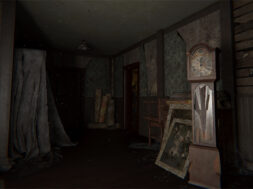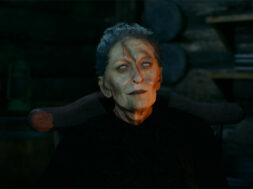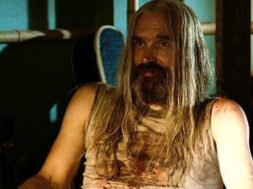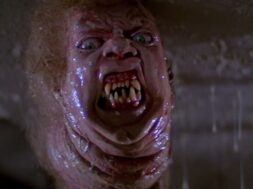If you had trust issues before, director Jon Knautz’s latest feature, The Cleaning Lady, will only make them worse.
Co-written by Knautz and Alexis Kendra, The Cleaning Lady follows Alice (played by Kendra), a beautician and recovering “love addict” attempting to end a longstanding affair with a married man. She hires Shelly (Rachel Alig), a shy, heavily scarred maintenance worker at her building, to take on some cleaning around her apartment. One night, while seeking to distract herself from her former lover, Alice asks Shelly to stay for dinner. Thus, a very unlikely friendship is born.
At first, the women enjoy each other’s company. However, things take a turn when the troubled housekeeper becomes infatuated with her new companion. Soon, Shelly’s past traumas begin to resurface, causing her to become obsessed with making Alice perfect.
The Cleaning Lady is a title that may not sound extraordinarily interesting, but the film itself is surprisingly refreshing. Both Kendra and Alig do very well with their respective roles and the lines they are given. Behind the camera, Knautz composes both interesting and creepy visuals. The story is relatively straightforward, but manages to remain engaging throughout.
Particularly interesting about this film is the great care taken to give both Alice and Shelly depth when they could have so easily been one-dimensional. Alice is not merely another bubbly, rich lady with an addiction to yoga, just as Shelly is not just a seemingly harmless, penniless maintenance worker. Both are complex, make mistakes, and battle demons. Having a grey area, rather than simply making the women polar opposites, allows us to acknowledge our protagonist is flawed and gives us room to feel sympathy for our villain. This aids the film in toying with the audience’s sense of right and wrong, as well as our expectations, at once situating us on the side of the killer and her victims. The Cleaning Lady has its fun exploring where the line should be drawn between fairness and injustice.
Any film beginning with rodents in a blender (a scene which showcases the oft-overlooked art of sound design) can be classified as grotesque, but The Cleaning Lady is truly disturbing. The kills are extremely violent and decidedly brutal, sure, but it’s Shelly’s abuse at the hands of her mother which implants itself firmly under the skin. We thankfully never see enough to deem the film crass, but we see enough for it to be effective. The film explores toxic relationships in a thoughtful manner while still staying true to the fact that it is, at its core, a horror film.
While The Cleaning Lady mostly works, it’s worth mentioning the ending feels unsatisfying because it is much too abrupt. Adding just a few more minutes of running time would have made the movie feel much more cohesive. A slightly longer version of the film would have allowed some of the loose ends to be tied up, and threads connecting Shelly’s trauma to her crimes to be fleshed out just a bit more. Stronger connections between these ideas would lessen the number of logical leaps the audience needs to make, and would bring a better sense of closure to the film.
The Cleaning Lady is a spellbinding glimpse into the mind of a deeply disturbed young woman. While it may sometimes feel underdeveloped, the film boasts solid technical ability and a sickening story to boot. With The Cleaning Lady, Knautz and Kendra have created a film that is truly twisted on every level.










